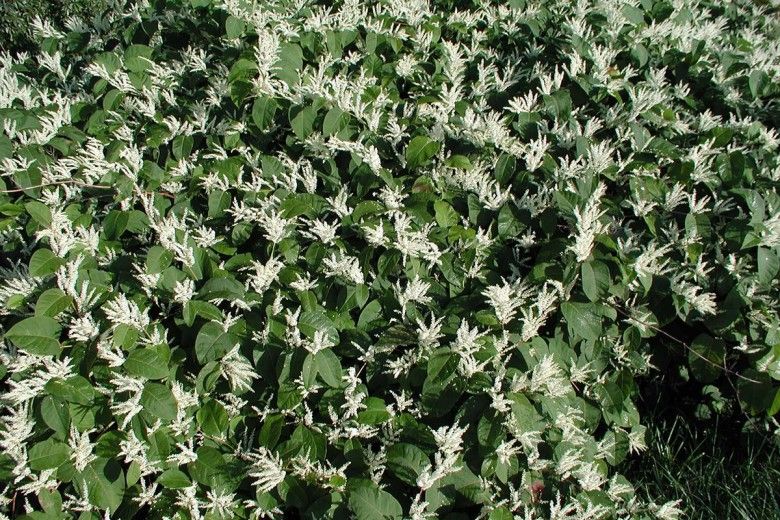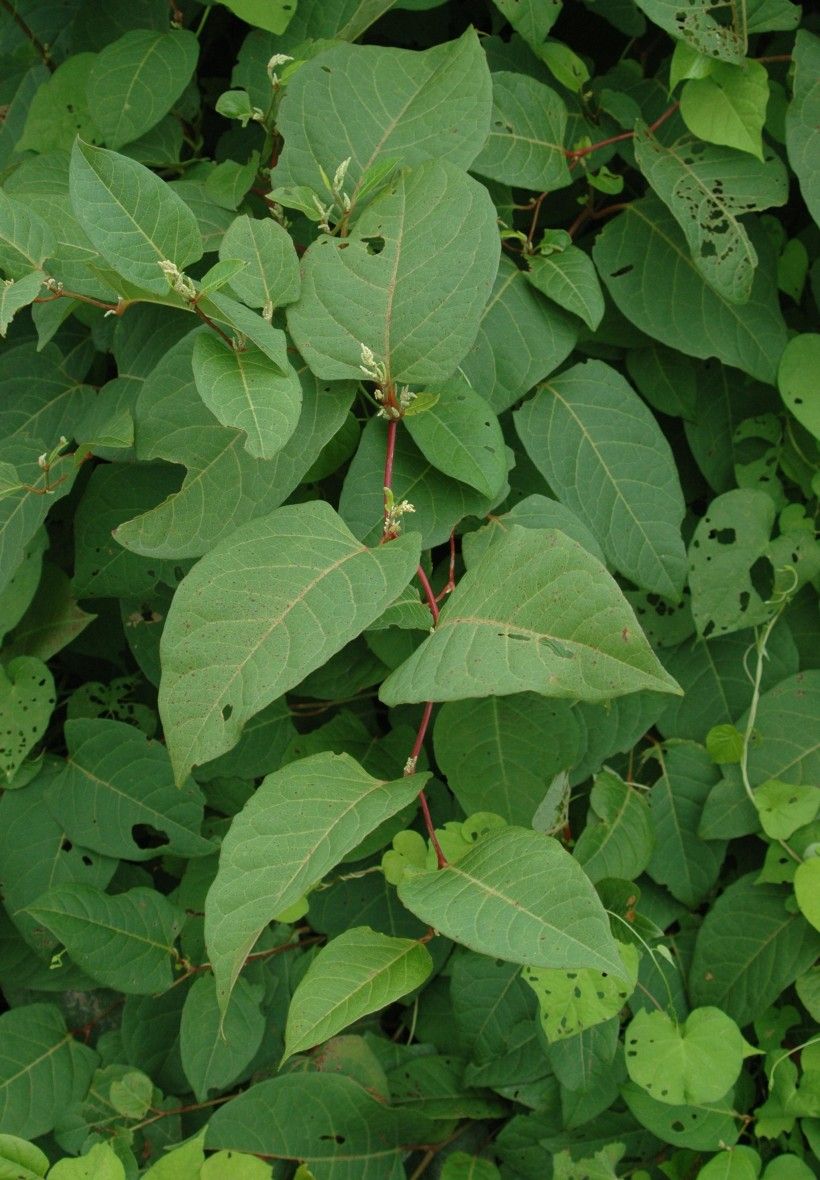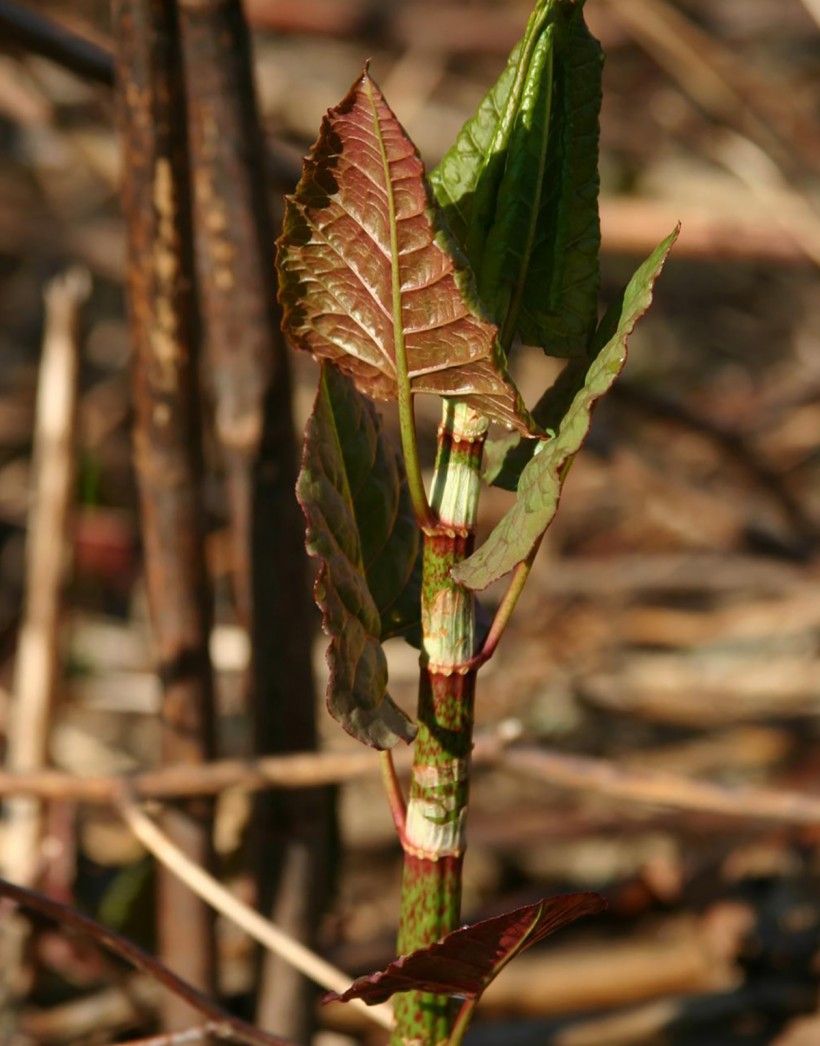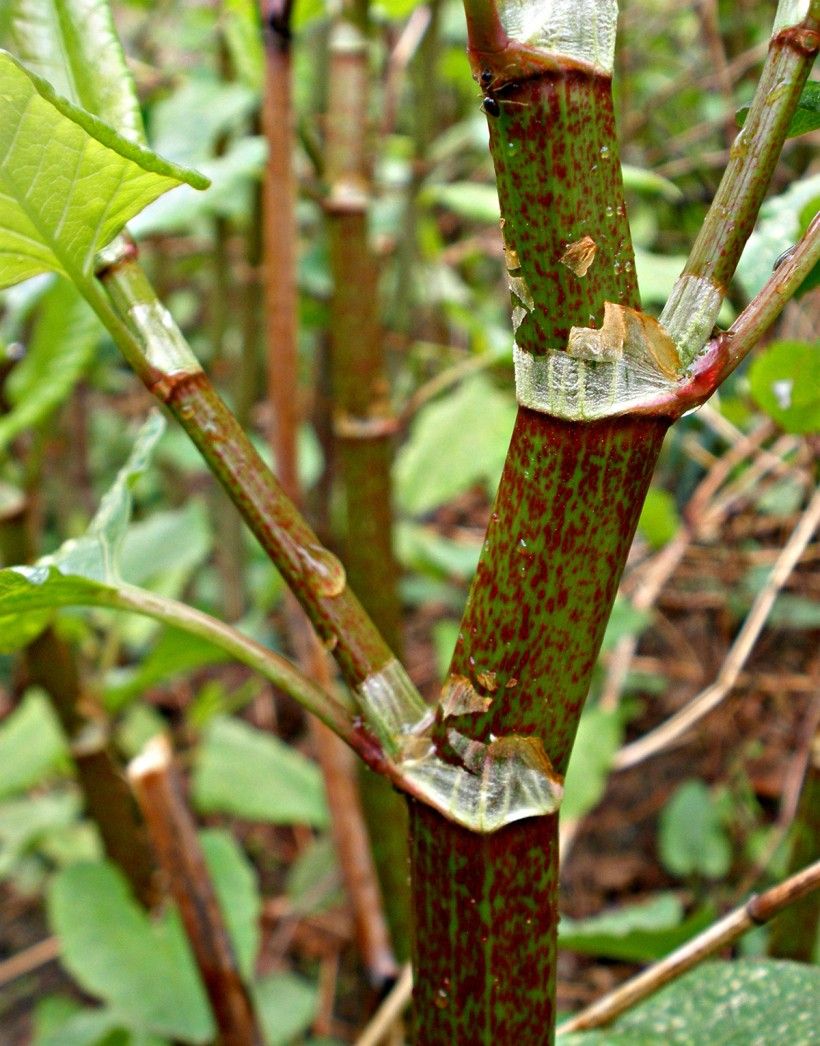Invasive Species Spotlight: Japanese Knotweed (Fallopia japonica)

Japanese knotweed (Fallopia japonica) spreads aggressively and forms dense thickets. It quickly creates a monoculture, crowding out native plants and nearly all other vegetation.

Once established, Japanese knotweed is persistent and challenging to eradicate. It is also a particular threat to riparian and other low-lying areas because it is tolerant of flooding and quickly populates scoured shores and islands.
Japanese knotweed can tolerate a wide variety of growing conditions, including high saline roadsides. Infestations of Japanese knotweed decrease biodiversity and degrade aquatic habitat and water quality. The roots can also grow through building foundations and damage infrastructure such as roads and bridges.
Japanese knotweed is included on the Pennsylvania noxious weed list and its sale and trade is banned in Delaware.
Origin
Originally from Japan, Japanese knotweed was popularized through British garden catalogues in the late 19th Century. It was planted as an ornamental and used for stream bank stabilization.
By 1894, it was reported to be naturalized in the mid-Atlantic region of the United States and by 1938 it was recognized as a nuisance for its rampant growth and spread.
Characteristics
Japanese knotweed, a member of the buckwheat family, is an herbaceous perennial plant that can reach over 10 feet in height. Leaves are about six inches long by 3-4 inches wide, alternately arranged, spade or heart-shaped, and emerge from nodes on the stem.


Stems are bright green and often covered with dark spots or streaks, turning reddish brown in the fall. Stems are smooth and hollow with red or purple nodes where the leaves are attached. Young stems just emerging in the early spring are reddish/purplish green with furled triangular leaves. Japanese knotweed blooms in late summer with sprays of greenish-white flowers emerging from leaf axils near the end of the stems.
Japanese knotweed forms dense, leafy thickets with the leaves appearing to zigzag from node to node. It is often confused with bamboo, another invasive plant, although bamboo is woodier with slender leaves that persist year-round. Japanese knotweed can hybridize with the also invasive giant knotweed, producing the hybrid bohemian knotweed. This hybridization can make identification tricky.
Dispersal
Japanese knotweed’s success outcompeting native vegetation comes from its ability to spread vegetatively through its roots, called rhizomes. Colonies are usually formed from an underground system of rhizomes, which can spread horizontally over 65 feet. Seed dispersal is rare.
Many shoots will sprout along the rhizomes. The rhizomes are prone to splitting when disturbed and each fragment can form a fully functional clone of the parent plant. Fragments can be dispersed along waterways during flooding events or by the movement of soil containing root fragments. New plants can also form from stem fragments if in contact with moist soil. This vegetative spread makes established Japanese knotweed populations extremely difficult to control.
Control
Controlling Japanese knotweed requires considerable effort and involves both initial eradication and follow-up maintenance. Our recommendation for controlling Japanese knotweed is to cut it back in early summer and then treat the regrowth with a 2% glyphosate solution (e.g. Roundup or Rodeo) as a foliar spray at least eight weeks after cutting. Cutting prior to herbicide application is especially useful if knotweed is growing near water because it is easier to treat the shorter regrowth without inadvertently spraying herbicides into the water.
Herbicide treatment works best in the fall, prior to leaf senescence. In the fall, the plants are moving nutrients down to their roots and preparing for winter dormancy. By taking advantage of this process and treating in the fall, the plants draw the herbicide down into their roots, making it more effective at killing the whole plant. Be sure to read and follow all herbicide labels carefully before use.
After initial control efforts have nearly eliminated the knotweed, you will need to periodically monitor the site and treat any new growth to prevent reinfestation. Once eradicated in an area, be sure to restore by planting native species.
Sources:
https://extension.psu.edu/japanese-knotweed
https://legis.delaware.gov/BillDetail?LegislationId=48260
https://www.brandywine.org/conservancy/resources/invasive-plants
Plant Invaders of Mid-Atlantic Natural Areas, NPS and U.S. Fish and Wildlife Service
Header image:
Dense thicket of flowering Japanese knotweed. Leslie J. Mehrhoff, University of Connecticut, Bugwood.org